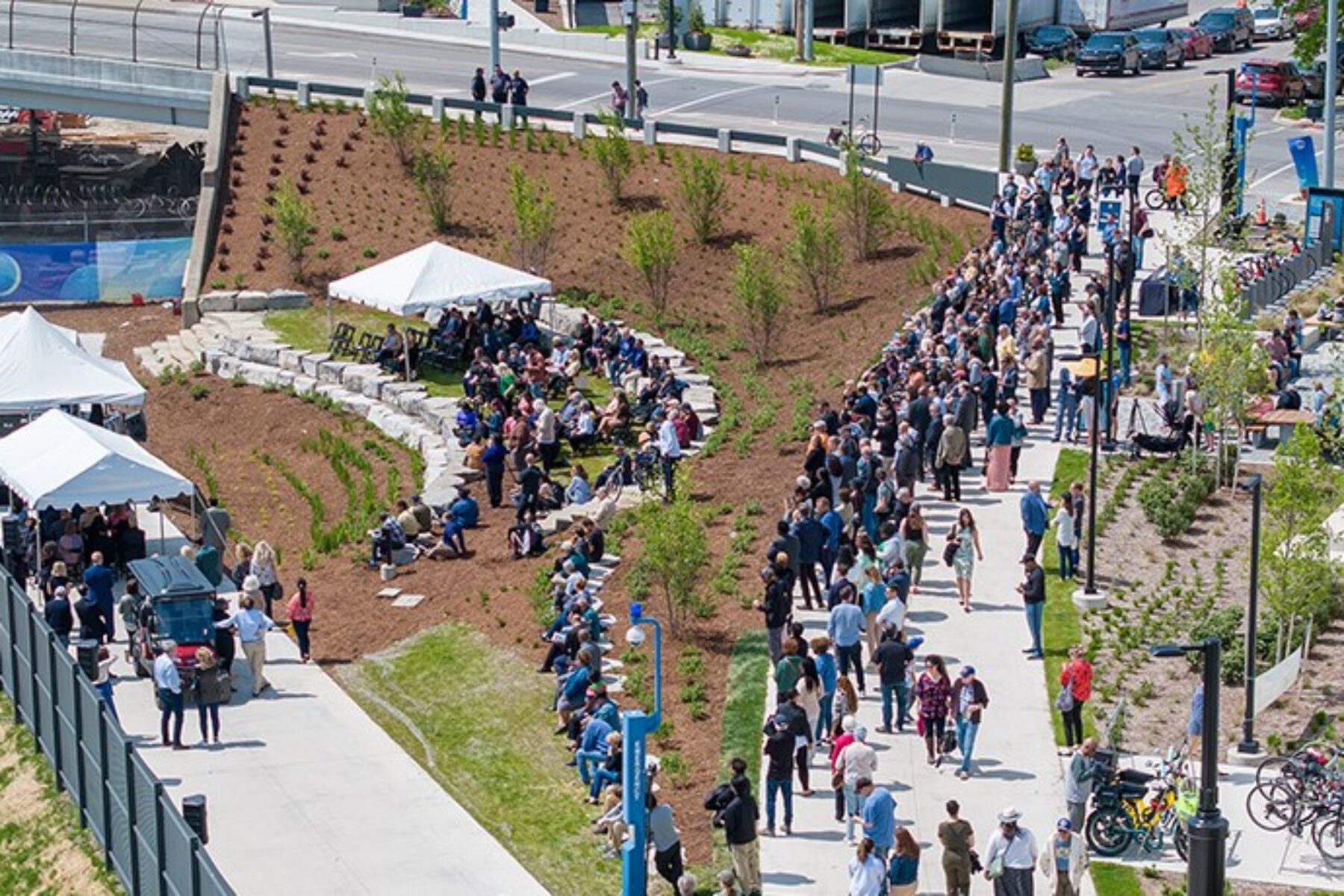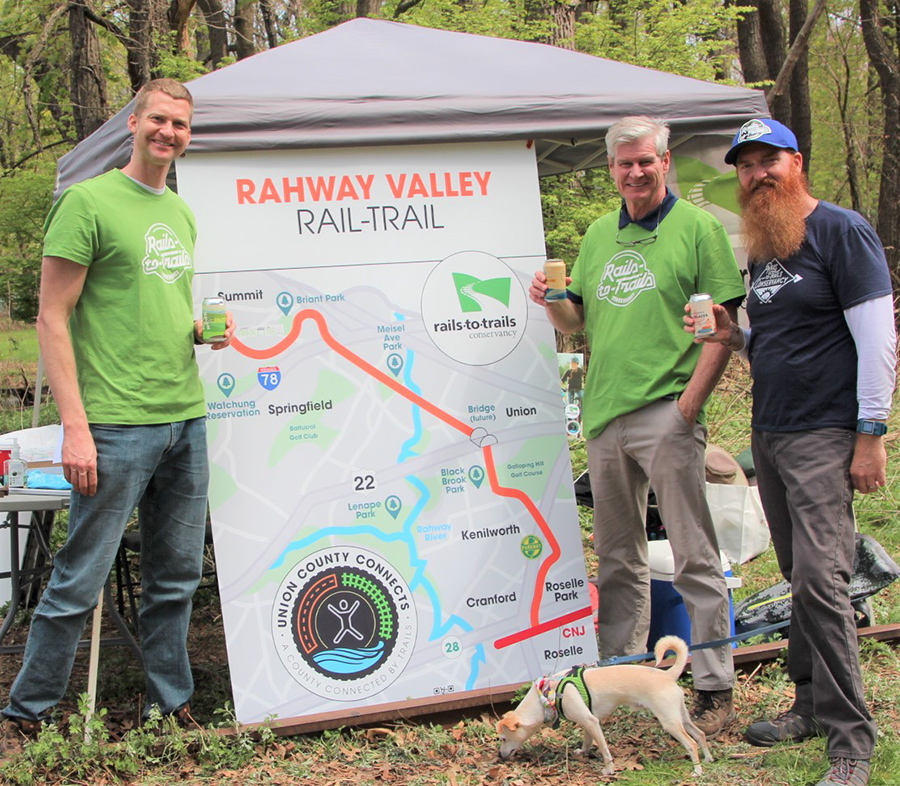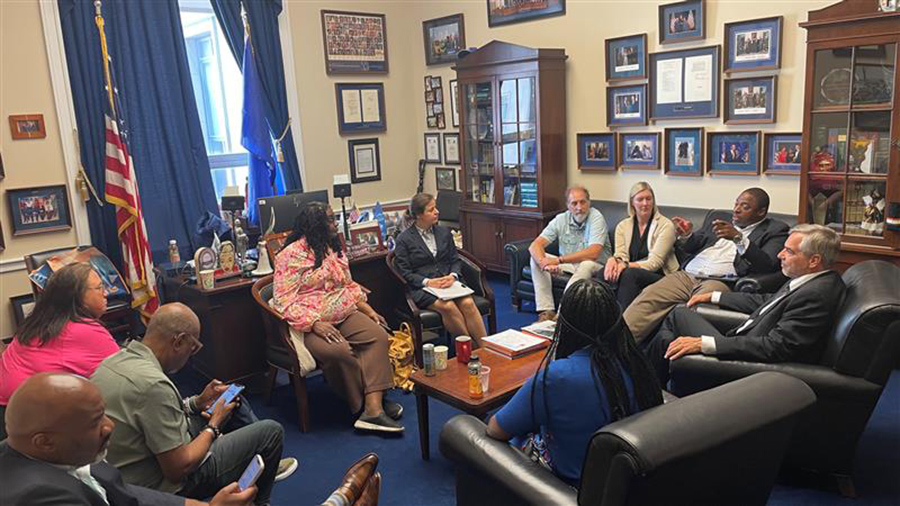Five Ways to Grow Support for Trails, Walking and Biking

It’s an exciting time for the trails movement. The demand for trails has been steadily growing in communities across the United States—where ambitious plans to connect trails and other active transportation infrastructure are rapidly rolling out to help people safely and conveniently get where they want to go, whether or not they drive. Furthermore, unprecedented investments in recent times in trails, walking and bicycling at the federal, state and local levels have greatly accelerated trail network development across the country.
We have come so far—and yet, there’s still much to accomplish. In nearly every community across the country, there are opportunities to create and connect trails, and at the federal level, there is more work to do to secure the investment needed to realize this potential.
Here are five ways you can become a changemaker for trails, and help build even more momentum for trails and active transportation networks, both where you live and across the country. Together, we can make the most of the opportunities before us.
1. Spotlight your local infrastructure needs.

Trail and active transportation networks are building blocks of healthy, thriving communities. To date, there are more than 41,000 miles of multiuse trails, which serve as the foundation for 150+ known trail networks across the country—and we know there are more. If you’re working to connect trails and walking and bicycling routes in your community, share your plans with RTC so that we can add them to our growing map and help elevate your work. Showcasing the breadth of trail and active transportation networks in development helps us illustrate the demand for this infrastructure and the significant need for project funding.
We also encourage you to tell impactful stories of why your plans are essential to the success of your community—lifting them up as a priority for local decision-makers—and to identify the resources needed to connect your system. Make it clear that safe, convenient routes to walk and bike, in the places where we live, can be transformative for communities and entire regions, and great returns on investment.
RELATED: TrailNation Playbook Investment Strategy
2. Secure the support of decision-makers to fill gaps in your trail system.

Beyond formal planning processes, look for other opportunities to persuade policymakers, including local elected officials, regional planners and metropolitan planning organizations (MPOs), state transportation agencies, and state and federal legislators that your plans are important. Contact decision-makers directly, if you have access, or identify the influential people who can introduce you or carry your message. You can use the stories, plans and maps, and documentation of needs and benefits already noted, to help you make your case.
RELATED: Building Relationships with Public Agencies and Officials
3. Advocate for your trail, walking and bicycling projects to be part of state and regional plans.
In order to advance your projects for public funding, they need to be reflected in in regional and state transportation plans (including the Transportation Improvement Program and the Statewide Transportation Improvement Program). Other plans also present opportunities to elevate walking and biking infrastructure as a solution to other challenges such as reducing traffic fatalities and climate emissions. Educate local and regional leaders about your plans, and make the case for including your project in these transportation plans. You’ll likely need to present your vision and its projected transportation impact to your MPO and local elected officials, as well as staff of relevant agencies. Make this the year that you get your infrastructure needs identified as officially sanctioned solutions.
4. Apply for funding.
The federal Bipartisan Infrastructure Law (BIL) passed in late 2021 has made available an unprecedented flow of resources to accelerate trail and active-transportation network development. While some programs—such as Transportation Alternatives—have, and are likely to remain, central sources of federal funding for trails, walking and bicycling, others are dependent on the priorities of decision-makers who may change. Now is the time to act to access the landmark federal funding currently available.
We encourage you (or your local government) to explore the many opportunities to apply for funding under direct federal competitive-grant programs such as RAISE (Rebuilding American Infrastructure with Sustainability and Equity), the Active Transportation Infrastructure Investment Program (ATIIP) and Safe Streets and Roads for All. These programs support planning and design work as well as construction, so be sure to consider your whole pipeline of present and future gaps to fill.
RELATED: Find potential funding sources! Use RTC’s funding tool to help determined which federal funding source may be best suited for your project.
5. Advocate for full funding for active-transportation connectivity grants.
The ATIIP is uniquely designed to meet your ongoing needs for concentrated funding to connect your walking and biking infrastructure within and between communities. RTC is campaigning to grow the program to $200 million in fiscal year 2025, and we encourage you to join us in our efforts. Some ways you can get involved:
- Urge Congress to fully fund the ATIIP.
- Contact your senators and House representative to urge them to support the ATIIP and educate them about the transformative impact the program can have on your community and your state.
- Urge others to get involved.
Building a nationwide network of interconnected trails and other walking and biking infrastructure is an ambitious goal, but it’s achievable. By focusing on local needs, incorporating projects into official regional and state plans, building political support, applying for funding and campaigning for active-transportation connectivity grants, we can build a more connected, sustainable and healthy future.
These are just a few ways you can be a changemaker for trails. Share with us your experiences and success stories in the comments. Your experiences will inspire more people get out there and advocate to create, connect and maintain trails in their communities.
Learn How to Advocate for Trails Where You Live
Want to be a voice for trails and trail networks? Check out our webinars page for opportunities to hear from top trail professionals on how you can make a difference for trails in your communities.

Donate
Everyone deserves access to safe ways to walk, bike, and be active outdoors.
